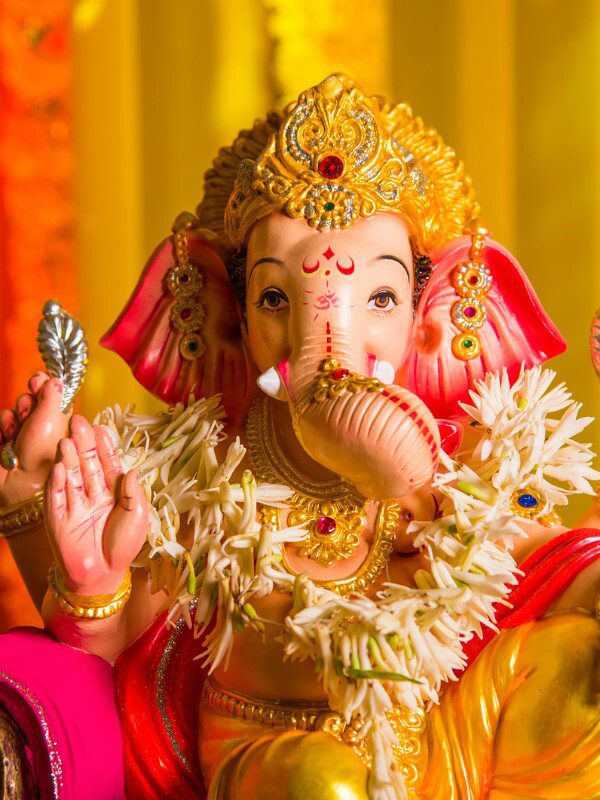Hinduism is a vast and complex religion with many practices and beliefs. This article highlights the top 10 religious practices of Hinduism. Puja is the practice of worshiping a deity, while yoga involves physical and mental exercises to achieve inner peace. Holi is a colorful festival to celebrate good over evil, and karma is the idea that every action has a consequence. Mantra is the repetition of sounds or phrases to connect with the divine, and pranayama is a breathing technique to reduce stress. Japa involves repetition of mantras or prayer beads, and Hinduism has many festivals throughout the year. Seva is selfless service, while pilgrimage involves traveling to holy sites for spiritual enlightenment. These practices demonstrate the diverse nature of Hinduism and its emphasis on spiritual connection and self-improvement.
1. Puja
Puja is a common Hindu practice of worship that involves paying homage to a deity. Puja can occur in the home, temple or at a public festival. The ceremony consists of offerings, including flowers, fruit, and incense to the deity, followed by speaking prayers and devotional hymns. A puja is often performed to seek blessings from the gods, for good health, and prosperity.
2. Yoga
Yoga is a spiritual and physical practice that involves numerous physical and breathing exercises. The physical aspect of the practice helps to tone and stretch the muscles, while the mental aspect of yoga helps to achieve peacefulness and calmness through meditation. Yoga is not limited to a particular religion, as it is practiced worldwide, but it is deeply interwoven with Hindu philosophy, which places an emphasis on self-awareness and mindfulness.
3. Holi
Holi is a colorful Hindu festival that is celebrated with great enthusiasm in India and Nepal. It is celebrated in honor of Lord Krishna and signifies the victory of good over evil. People throw powdered colors and water at each other, sing, dance and enjoy sweets on this day. The festival also brings people back together and helps to strengthen relationships.
4. Karma
Karma is the Hindu principle that every action has a consequence, either positive or negative. Hindus believe that the ultimate goal in life is to achieve good Karma, which leads to greater success and happiness in the next life. By performing good deeds, one is capable of purifying their soul and increasing their positive Karma.
5. Mantra
Mantra is a common Hindu practice of meditating on a sacred sound or phrase for spiritual development. The sound or phrase is repeated several times, either vocally or mentally. Mantras are believed to have healing and transformative powers, helping to create a deeper spiritual connection to the universe and the divine.
6. Pranayama
Pranayama is a breathing technique that is practiced in yoga, which helps to increase energy and reduce stress levels. The practice is performed by inhaling, holding the breath and exhaling for a specific amount of time. The practice is thought to help re-energize and revitalize the body.
7. Japa
Japa is the repetition of a mantra or prayer bead, which helps to focus the mind and promote concentration. The practice is often done with a mala, which is a strand of beads that is used to count repetitions of the prayer or mantra.
8. Festivals
Hinduism has numerous festivals throughout the year, each with its own significance and rituals. Some of the more important festivals include Diwali, Navaratri and Durga Puja, which are all celebrated with great fervor and joy. The festivals are an opportunity for Hindus to come together, commemorate their religion and bond with their community.
9. Seva
Seva is a selfless service, which is performed without expecting anything in return. It is a practice that is deeply rooted in Hinduism and helps to form a sense of community and social cohesion. Seva can include feeding the homeless, volunteering at a hospital or helping to clean up trash in the neighborhood.
10. Pilgrimage
Pilgrimage is a practice that involves traveling to a holy site or temple to seek spiritual enlightenment or religious knowledge. In Hinduism, there are numerous pilgrimage sites, including the temples of Varanasi and the holy city of Haridwar. Pilgrims often travel long distances to these sites, where they participate in rites and rituals that help to purify the soul and deepen their spiritual connection.
In conclusion, Hinduism is a diverse and complex religion with a variety of practices and beliefs. These top 10 religious practices of Hinduism are just a glimpse into the rich culture of this ancient religion. Whether it is through puja, yoga or generosity through seva, each practice seeks to elevate the human spirit and develop a deeper connection with the divine.
